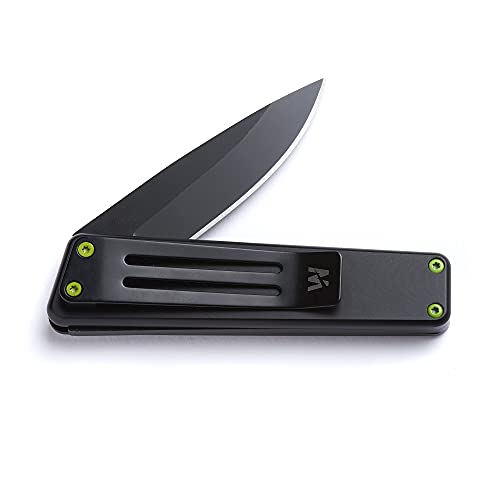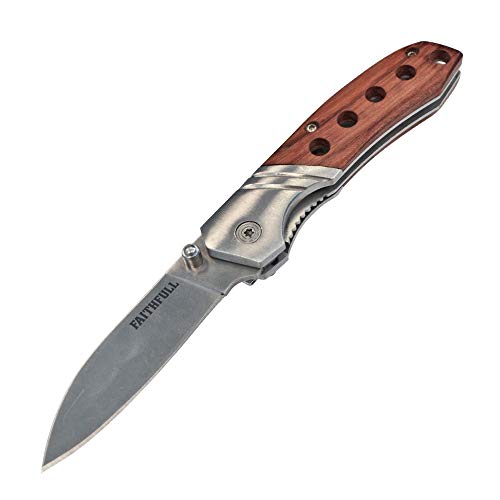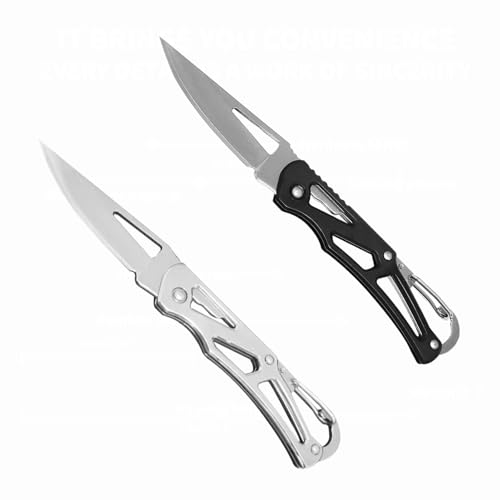
Self Defense With A Knife – The Learning Curve
In an unpredictable world, mastering self defense with A Knife is more than just a skill; it’s a vital component for personal safety. Among the plethora of self-defense techniques, knife techniques stand out for their versatility and effectiveness in various situations.
Whether you’re navigating an unfamiliar city or merely looking to boost your confidence, understanding essential knife techniques can empower you to face challenges head-on. This article unveils the core principles of self-defense involving a knife, blending practical advice with real-life scenarios.
Join us as we explore how you can transform fear into strength, learning the essential moves that could make all the difference when it matters most.
With the right knowledge and practice, you can turn the tide in your favour and master the art of self-defence. Let’s dive in and equip you with the skills you need for every situation!
Understanding the Importance of Knife Defense
In today’s unpredictable world, personal safety remains a top priority for many. Self-defense techniques are invaluable skills that can provide a sense of security and confidence.
Among these techniques, knife defense stands out for its practicality and effectiveness. The ability to wield a knife for self-defense can be a lifesaver in critical situations where other forms of defense might not be feasible.
The versatility of a knife, coupled with the precision of its use, makes it a formidable tool in the hands of a well-prepared individual.
The importance of knife defense lies in its adaptability.
Unlike other self-defence tools, knives can be easily concealed and carried, making them accessible in a variety of scenarios.
This accessibility means that one can be prepared to defend oneself even in unexpected circumstances. Additionally, the psychological impact of a knife can often deter would-be attackers.
The mere presence of a knife can serve as a powerful deterrent, making potential aggressors think twice before engaging.
Moreover, knife defense techniques can be learned by individuals of all sizes and strengths. Unlike some martial arts that require significant physical power or agility, knife defense relies on technique, strategy, and precision.
This makes it an inclusive form of self-defence that can empower people from all walks of life. By mastering knife techniques, individuals not only equip themselves with a powerful means of protection but also gain the confidence to navigate the world more boldly.
Types of Knives Used in Self-Defence
When it comes to self-defense, the type of knife you choose can make a significant difference. There is a plethora of knives designed specifically for defence, each with its unique features and advantages.
Understanding these options can help you make an informed decision about which knife is best suited for your needs.
One popular choice is the tactical folding knife. These knives are designed for quick deployment and easy concealment.
They typically feature a locking mechanism to ensure the blade stays securely in place during use. The compact size of a folding knife makes it easy to carry in a pocket or purse, providing a discreet yet effective means of self-defence.
Fixed-blade knives are another excellent option for self-defense. Unlike folding knives, fixed-blade knives do not have moving parts, which means they are generally more durable and reliable.
They come in various sizes, from small, easily concealable blades to larger, more intimidating designs. The strength and stability of a fixed-blade knife make it a formidable tool in self-defence situations, offering a dependable option when you need it most.
Karambit knives, with their distinctive curved blades, are also worth mentioning. Originally used in Southeast Asia for agricultural purposes, the karambit has been adapted for self-defense due to its unique design.
The curved blade allows for a variety of cutting techniques and angles, making it highly effective in close-quarters combat. The ergonomic handle design ensures a secure grip, reducing the risk of the knife being dropped or taken away during an altercation.
Basic Knife Safety Rules
Before diving into specific self defense with A Knife techniques, it’s crucial to understand and adhere to basic knife safety rules.
These rules form the foundation of responsible knife handling and are essential for preventing accidents and injuries.
Whether you are a beginner or an experienced practitioner, following these guidelines will help ensure your safety and the safety of those around you.
First and foremost, always treat a knife with respect. A knife is a tool that can cause serious harm if not handled properly. Never point a knife at anyone, even in a joking manner, and always be aware of the direction in which the blade is pointing.
When passing a knife to someone else, do so by offering the handle, not the blade, to prevent accidental cuts.
Next, keep your knife sharp. A dull knife can be more dangerous than a sharp one because it requires more force to cut, increasing the likelihood of slipping and causing an injury.
Regularly maintain your knife by sharpening it and ensuring the blade is free of nicks and burrs. Proper maintenance not only enhances the knife’s effectiveness but also contributes to safer handling.
Lastly, develop good habits for carrying and storing your knife. When carrying a knife, ensure it is securely sheathed to prevent accidental exposure of the blade.
Never carry an unsheathed knife in your pocket or bag. When not in use, store your knife in a safe place, out of reach of children and others who may not know how to handle it properly.
Following these basic safety rules will create a foundation of responsible knife handling, allowing you to focus on mastering essential techniques.
Essential Knife Techniques for Beginners
For those new to knife defence, starting with essential techniques is crucial. These foundational moves will help build your confidence and provide a solid base for more advanced skills.
It’s important to practice these techniques regularly to develop muscle memory and ensure you can perform them effectively under pressure.
The first technique to master is the grip. A proper grip on the knife ensures control and stability during use.
The most common grip is the hammer grip, where you hold the knife as if you were holding a hammer, with your thumb wrapped around the handle and your fingers securing the other side.
This grip provides a strong, secure hold, reducing the risk of the knife being knocked out of your hand.
Next, focus on basic striking techniques. The thrust is a fundamental move where you extend your arm to drive the blade forward into your target. This technique is effective for creating distance between you and an attacker.
Another essential strike is the slash, where you use a sweeping motion to cut across your target. The slash can target various parts of the body, making it a versatile move in self-defense scenarios.
Defensive techniques are equally important for beginners. One key move is the block, where you use the knife to deflect an incoming attack.
To execute a block, position the knife vertically or horizontally to intercept the attacker’s strike, using the blade or handle to absorb the impact.
Another defensive technique is the parry, where you use the knife to redirect the attacker’s weapon away from your body.
Mastering these basic techniques will provide a strong foundation for effective knife defence, giving you the tools to protect yourself in various situations.
Advanced Knife Techniques for Experienced Practitioners
Once you have mastered the basic techniques, advancing to more complex knife manoeuvres can significantly enhance your self-defence capabilities.
Advanced techniques require a higher level of skill, precision, and practice, but they can be incredibly effective in a wider range of situations.
These moves often involve greater coordination and strategic thinking, making them suitable for experienced practitioners.
One advanced technique is the reverse grip, where you hold the knife with the blade pointing downward and the handle secured by your palm.
This grip allows for powerful, close-range strikes and can be particularly effective in confined spaces. The reverse grip can also be used for quick, upward thrusts, targeting vulnerable areas such as the abdomen or under the chin.
Another advanced manoeuvre is the disarm.
This technique involves using your knife to neutralise an attacker’s weapon, rendering them less of a threat.
To execute a disarm, you need to move quickly and decisively, using your knife to target the attacker’s wrist or hand, causing them to drop their weapon.
This move requires precision and timing, as well as an understanding of your opponent’s movements.
The art of knife trapping is also an advanced skill worth mastering. Trapping involves using your knife to control or immobilise an attacker’s limb, preventing them from using their weapon effectively.
This technique requires a combination of blocking, redirecting, and counter-attacking, making it a dynamic and versatile skill.
By incorporating these advanced techniques into your repertoire, you can elevate your self-defence abilities and be better prepared for a wider array of scenarios.
Situational Awareness: When to Use Knife Techniques
Knowing how to use a self defense with A Knife is only part of the equation; understanding when to use it is equally important.
Situational awareness is the ability to perceive and understand your environment, recognising potential threats and responding appropriately.
This awareness can help you determine the best course of action in any given situation, including whether to deploy your knife techniques.
Situational awareness begins with observing your surroundings. Pay attention to the people around you, noting any unusual behaviour or potential threats.
Trust your instincts; if something feels off, it’s better to be cautious. Avoid distractions such as mobile phones or headphones that can impair your ability to stay alert.
By staying aware of your environment, you can identify potential dangers before they escalate.
Once you’ve identified a potential threat, assess the situation to determine the appropriate response. Not every scenario warrants the use of a knife.
In some cases, de-escalation techniques such as verbal communication or retreating to a safe location may be more appropriate. However, if you are faced with an imminent threat and have no other means of protection, your knife techniques may be necessary to defend yourself.
It’s also essential to consider the context in which you find yourself.
Using a knife in a crowded or public space can have serious consequences, not only for your safety but also for those around you.
Always weigh the risks and benefits of using your knife, and be prepared to justify your actions if necessary.
By practising situational awareness, you can make informed decisions about when and how to use your knife techniques effectively and responsibly.
Legal Considerations for Carrying and Using a Knife
While mastering knife techniques is crucial for self-defence, it’s equally important to understand the legal implications of carrying and using a knife.
Laws regarding knives vary significantly by region, and being aware of these regulations can help you avoid legal trouble.
Ignorance of the law is not a valid defence, so it’s essential to educate yourself on the legal considerations in your area.
First, research the laws pertaining to knife carry in your jurisdiction. Some areas have specific restrictions on the types of knives that can be carried, such as prohibiting certain blade lengths or styles.
Additionally, there may be regulations regarding how and where you can carry a knife. For example, carrying a concealed knife without a permit may be illegal in some regions.
Familiarise yourself with these laws to ensure you are in compliance.
Next, understand the legal definition of self-defence in your area.
Different jurisdictions have varying criteria for what constitutes a justified use of force. Generally, self-defense laws allow you to use force, including a knife, if you reasonably believe it is necessary to protect yourself from imminent harm.
However, the use of deadly force, such as stabbing or slashing, must be proportionate to the threat you face. Using excessive force can result in criminal charges, even if you were acting in self-defence.
Finally, be aware of the potential legal consequences of using a knife for self-defense. In the aftermath of an incident, you may be subject to investigation and prosecution.
It’s advisable to seek legal counsel to understand your rights and responsibilities. Being prepared with this knowledge can help you navigate the legal system and protect yourself from potential liabilities.
By staying informed about the legal considerations of carrying and using a knife, you can practice self-defence responsibly and within the bounds of the law.
Training Resources for Mastering Knife Techniques
To truly master knife techniques for self-defense, continuous training and practice are essential. Fortunately, there are numerous resources available to help you develop your skills, from instructional videos to in-person classes.
Utilising these resources can provide you with the knowledge and experience needed to become proficient in knife defence.
One valuable resource is online instructional videos.
Many experts in self defense with A Knife offer tutorials and demonstrations on platforms such as YouTube.
These videos can provide step-by-step guidance on various techniques, from basic grips to advanced manoeuvres.
Watching and practising along with these videos can help you refine your skills and gain a deeper understanding of knife defence.
In-person classes are another excellent way to learn and practice knife techniques. Many martial arts schools and self-defence academies offer specialised courses in knife defence.
These classes provide hands-on training with experienced instructors who can offer personalised feedback and guidance.
Additionally, practising with a partner in a controlled environment allows you to simulate real-life scenarios, enhancing your ability to respond effectively in actual situations.
Books and instructional manuals are also valuable resources for mastering knife techniques. Many experts in the field have published comprehensive guides that cover a wide range of topics, from basic principles to advanced strategies.
These resources often include detailed illustrations and explanations, making it easier to understand and practice the techniques. By combining these various training resources, you can develop a well-rounded skill set and become proficient in knife defense.
Conclusion: Empowering Yourself Through Knowledge and Practice
Mastering self-defense, particularly knife techniques, is a journey that requires dedication, practice, and continuous learning.
The world can be unpredictable, and equipping yourself with the skills to protect yourself and your loved ones is an empowering endeavour.
Understanding the importance of knife defence, choosing the right type of knife, adhering to safety rules, and mastering both basic and advanced techniques are crucial steps in this journey.
Situational awareness plays a vital role in determining when to use your knife techniques, ensuring you make informed decisions in potentially dangerous situations.
Additionally, being aware of the legal considerations surrounding the carrying and use of a knife is essential for practising self-defence responsibly.
By staying informed and compliant with the laws in your area, you can avoid legal complications and focus on protecting yourself effectively.
Utilising various training resources, such as online videos, in-person classes, and instructional books, will help you continuously improve your skills.
Regular practice and seeking guidance from experienced instructors can significantly enhance your proficiency in knife defence. Ultimately, the goal is to empower yourself through knowledge and practice, transforming fear into strength and confidence.
In conclusion, mastering knife techniques for self-defense is an invaluable skill that can provide a sense of security and preparedness in an unpredictable world.
By dedicating yourself to learning and practising these techniques, you can equip yourself with the tools needed to face challenges head-on and protect yourself in various situations.
Remember, self-defence is not just about physical skills; it’s about developing the mindset and confidence to navigate the world safely and assertively.
So, take the first step in your journey to mastering self-defence, and empower yourself through the knowledge and practice of essential knife techniques.
Hope you got what you needed from our self defence with a knife, please feel free to comment below if you have any questions or any tips and tricks that you have used in the past.
Check out our other self-protection essentials












































